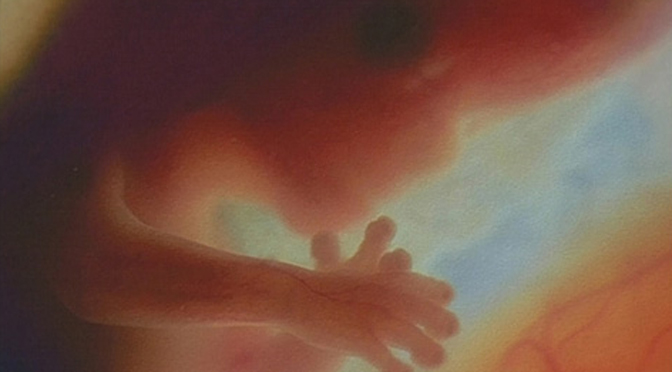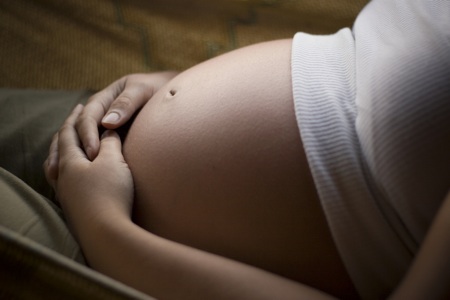The fertility industry, seen by many as pro-life, is actually a billion-dollar industry that exists to create human beings on demand — and which often then destroys them at will. A clear example of this disregard for human life is the story of Ashley and Calli.
Like many couples, Ashley and Calli wanted to have children. They spent months contemplating and choosing the sperm donor they would use to create the children they wanted before starting fertility treatment. What they sought was a man who was similar to Ashley — dark hair, olive skin, and an athlete — since Calli would be the one who would carry the babies and would be their biological mother.
“We wanted it to be as close to us conceiving as possible,” Calli wrote in a June 2021 post published at Love What Matters, which has since been removed.
After deciding on the sperm donor, the couple began fertility treatments. Calli was given medication to stimulate ovulation, even though, as she said, she had previously donated eggs. Through that process, she learned she produced more follicles than the average woman. After undergoing insemination at the clinic, Calli became pregnant. An ultrasound revealed there were five babies.
“And there on the screen: five heartbeats,” wrote Calli. “Instant panic. Excitement turned to instant worry and stress. I was instructed to stop taking any and all medications that could be stimulating the follicles to see if any would fall off and not take at the next ultrasound.”
READ: ‘Three parent’ IVF and the controversy of ‘constructing a baby’
But these weren’t follicles anymore. These were her living children, with heartbeats and brains. Each of them was a unique human being living in her womb, as she had wanted — but she felt there were too many of them. At the next ultrasound, the women were sad to see that all of the children were still alive and two weeks older. The doctors gave them three options.
The first option was to undergo a first-trimester surgical abortion known as a D&C — which would use powerful suction to remove all of the babies in pieces — and then start over with another pregnancy as if those lives had not existed.
The second option was to carry all five babies for as long as Calli could, in hopes that all of the babies would survive. But they found this to be unreasonable, because Calli could “end up on bed rest and one of us has to quit our jobs and stay home because five is just an overwhelming number.”
Yet sacrifices are a part of parenting, but these women refused to make sacrifices so that their children could live. They didn’t want to be parents to five children, though they took risks in using fertility treatments, knowing this could be the outcome.
The third option presented to them was selective reduction, which would involve directly targeting some of the babies for death. This is the option they chose. The problem was, there wasn’t a doctor in their state of Arizona who would do the selective reduction, so they found someone in California willing to do so.
“This was never an easy decision to choke down,” said Calli. “I still, to this day, beat myself up about it mentally at times but know, deep down, it was the right decision for me and my family and that’s what matters. Looking further into all of this reduction information, I was required to carry all five potential fetuses to 12 weeks to ensure that the reduction didn’t terminate the entire pregnancy and that all were big enough to actually be able to get to through the abdomen. Carry five fetuses to 12 weeks knowing I’m reducing three of them and being left with two… MENTAL NIGHTMARE!”

Preborn child at 12 weeks
At first, she called them “potential fetuses” and then she called them “fetuses.” At just 10 weeks, preborn children are termed “fetuses.” By 12 weeks, their faces make complex expressions, their tiny noses and lips are formed, and the doctor can determine if they are boys or girls. They can sigh, stretch, open their mouths, and suck their thumbs.
When Calli said the babies had to be “big enough to actually be able to get to through the abdomen,” what she meant is they had to be large enough so that the abortionist would be able to stick a needle into their hearts or heads, which would inject a medication to cause them to go into cardiac arrest. Then their dead bodies would wither away right alongside their two living siblings, who had just narrowly escaped death themselves — and likely were aware that a trauma was occurring.
Sharon Withers, the managing editor of Twins Magazine, told WebMD, “One of the things we know about a surviving twin is that they feel the sense of loss — even in utero losses. They feel something is missing. Psychologists say it’s healthier for the surviving twin if parents try to weave the memory of that twin into the family through occasional discussion, being careful not to enshrine that twin. The message should be: ‘We miss your twin, and we love you very much.'”
Calli went on to complain that she would not receive sedation or pain management for the selective reduction procedure, but did not express concern that her children wouldn’t either. Recent research has shown that children at 12 weeks are capable of feeling pain, possibly even to a great extent.
“So, I took six amniocentesis needles through my abdomen to penetrate the fetuses that the doctor chose to reduce. Six! It was 25 minutes of toe-curling, heart-breaking, hand squeezing pain. I’ve never cried so hard. Broken,” wrote Calli. Despite her reservations, she feels killing three of her babies was “the right decision for our forever family.”

Screenshot of Google links to the now-deleted Love What Matters article.
Today, those babies are school-aged, and both of them — a boy and a girl — have been diagnosed with autism. Research points to an increased risk of autism in children conceived through fertility treatment, and one study found these children are nearly twice as likely to have autism as other children.
READ: ‘So sad and confusing’: IVF’s physical and psychological impact on children
Just as women have been sold the lie that they aren’t good enough, strong enough, or capable enough to parent their own children, Calli and Ashley were sold on the idea that keeping all of the children they helped create would mean they would have to give up their other dreams. Society has for too long pitted mothers against their own children instead of welcoming each and every life.
Well-meaning individuals turn to fertility treatment in hopes of being blessed with a child, ignorant of the fact that the industry has likely ended more lives than it has seen born. An estimated 1.7 million embryos have been destroyed through the IVF process. In the United States, it is also believed that one million embryos have been frozen indefinitely. In comparison, about one million babies have been born through IVF in the United States.
Anyone who is considering fertility treatment or beginning the process of IVF must be aware that there is a chance doctors will expect them to dispose of some of the babies they create. It’s unethical, inhumane, and cruel, but the industry is profiting from individuals’ and families’ desperate desire to have children of their own, at the expense of human lives.
While Love What Matters provided no explanation for the deletion of the post, Breitbart reported that Live Action founder Lila Rose stated on Instagram that “Love What Matters received backlash from thousands of pro-life supporters.”
“Like” Live Action News on Facebook for more pro-life news and commentary!







